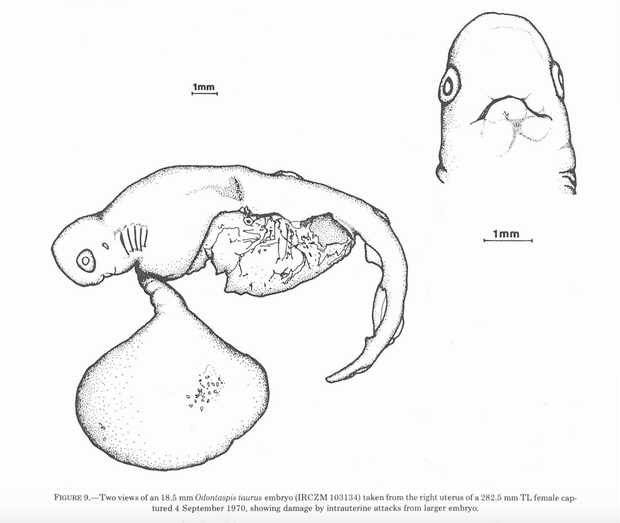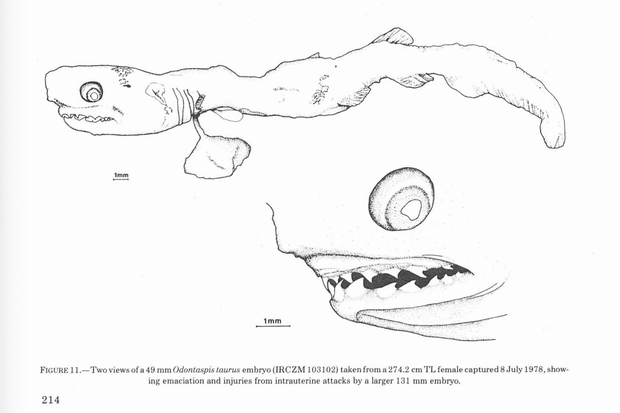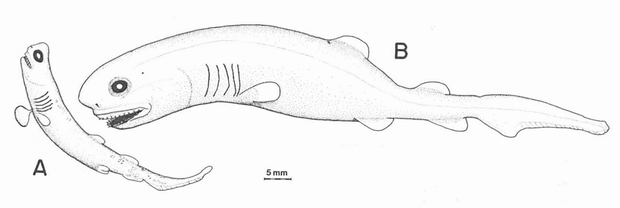CBS News
Guatemala’s president says U.S. should invest more to deter migration
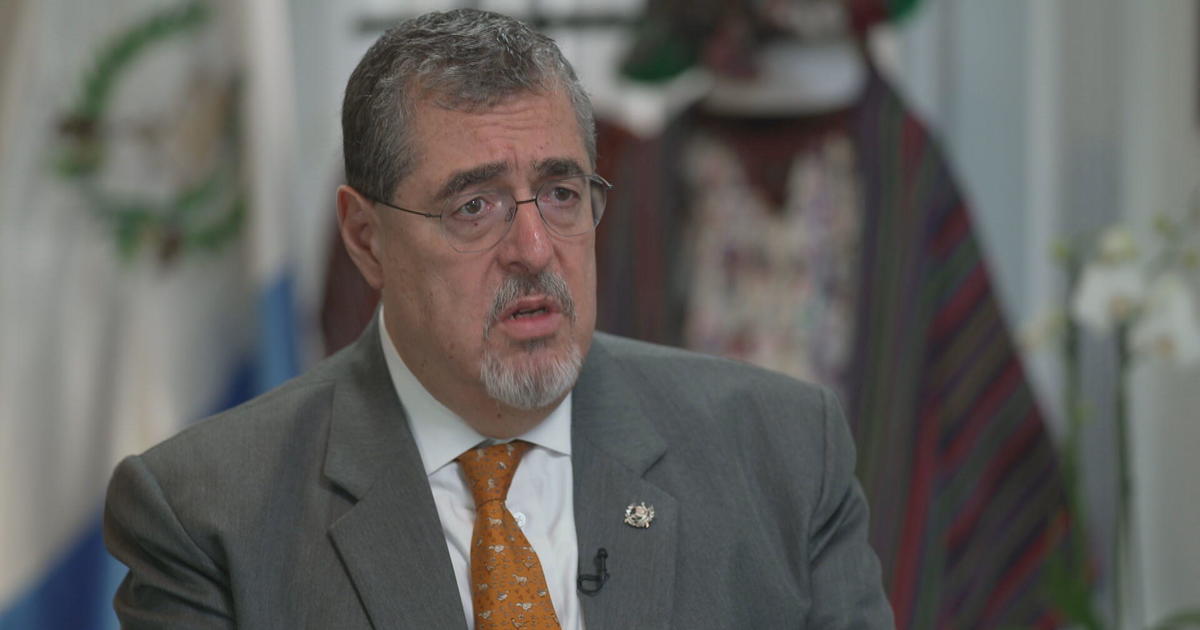
Washington — Nearly three years ago, Vice President Kamala Harris stood alongside the then-president of Guatemala in his palace and delivered a message to would-be migrants: “Do not come” to the United States.
Her pleas didn’t work. Since June 2021, when Harris made those remarks, U.S. officials have tallied 709,305 encounters with migrants from Guatemala along the southern border, according to government data. More than 2 million migrants of all nationalities are expected to be apprehended along the border by the end of this fiscal year in September, which would be the third straight year of sustained foot traffic across the span.
Asked this week whether migrants have heeded Harris’ request from three years ago, Guatemala’s new president, Bernardo Arévalo, shrugged his shoulders and said, “Well, I don’t know. You do the numbers.”
Arévalo, who took office in January, came to Washington this week to meet with President Biden and Harris as the White House hopes to demonstrate progress on addressing border security and immigration, issues that remain top voter concerns.
He told CBS News the president was “enchanting” and “very warm” in a brief Oval Office exchange captured by White House photographers. But in longer meetings with Harris, Arévalo said he told her Guatemala needs more U.S. economic investment — not just taxpayer-funded American relief — in order to encourage people to stay put.
“Cooperation is not sending money. Cooperation can be by creating conditions in which we can invite you to invest in Guatemala and establish factories, work that can begin to produce and create jobs. That’s fundamentally what we are most interested in,” he told CBS News.
Ron Sachs/CNP/Bloomberg via Getty Images
“We have to work to allow people, what we call, ‘The right to stay.’ People have a right to remain in their places. People need to find opportunities,” Arévalo added.
Mr. Biden tasked Harris with addressing the “root causes” of migration early in their administration as the number of illegal border crossings spiked after four years of hardline border security policy under former President Donald Trump. But the Biden administration is now anticipating another busy spring along the U.S.-Mexico border, and officials tell CBS News the president is still considering taking executive action to curb the crossings if Congress fails to enact a bipartisan plan negotiated by senators last year.
As she personally wades back into the politically tricky issue, Harris on Monday announced another $170 million in economic development and security assistance for Guatemala. Arévalo welcomed the investments as a long-term solution to preventing his country’s citizens from leaving and signaled he’d prefer to see that kind of cooperation continue. But he also did not discount the possibility of working with a second Trump administration.
“We are looking forward to working with whoever wins in the next election to support and work so that our citizens that are residents in the United States enjoy full rights,” Arévalo said.
Asked whether he thought Trump’s preference for border walls works, he said, “I think that history shows they don’t. What we need to look for is integrated solutions to a problem that is far more complex than just putting a wall to try to contain.”
“Corruption is the most urgent problem”
Arévalo, 65, is a former diplomat and sociologist and the son of the late former Guatemalan president Juan José Arévalo, who was the country’s first democratically elected president from 1945 to 1951.
The younger Arévalo took office in January after running an underdog campaign on an anti-corruption platform and defeating several better-known, better-funded opponents backed by the country’s political and economic elite. His victory effectively put an end to the country’s long standing conservative political establishment. But rivals who control the country’s judiciary continue to try prosecuting him and his political party, accusing them of rigging the results of last year’s elections — accusations he strongly disputes.
“We believe that corruption is the most urgent problem,” Arévalo told CBS News. “But the most important problem is development. But if we do not fight corruption, we are not going to be able to get the development that we need so that people can flourish and stay.”
As he tries to revamp Guatemala’s government and restore democratic norms, Arévalo said he supports the release of journalist José Rubén Zamora, who was sentenced to six years in prison in 2023 on money laundering charges under the former President Alejandro Giammattei’s administration.
Zamora’s newspaper, “El Periódico,” published countless stories about corruption within the Giammattei administration. It was forced to shut down after he was detained, due to a lack of resources and its journalists fleeing the country for fear of prosecution. Zamora’s case has earned international attention and condemnation from international journalists’ rights groups.
“We would hope for him to be released tomorrow,” Arévalo said of Zamora.
On his Inauguration Day, Arévalo said he sent the head of the country’s prison system to “transform” the torturous conditions under which Zamora was being held. While the president supports the journalist’s liberation, Arévalo could not specify a release date for the detained journalist because does not control Guatemala’s judiciary under the Guatemalan Constitution.
“We know that the accusations are just not serious,” he said. “But we cannot interfere with the Court of Justice, so we don’t know.”
CBS News
These cannibal baby sharks eat their siblings in the womb

Watch CBS News
Be the first to know
Get browser notifications for breaking news, live events, and exclusive reporting.
CBS News
What will happen to the price of gold if inflation hits 2%?

Getty Images
With rampant inflation over the past couple of years, the Federal Reserve quickly raised interest rates and has held them steady for the past year. Meanwhile, gold prices have been strong recently, with the price of gold per ounce hitting a record of over $2,400 in May. Although gold prices have come down slightly since then, they’re still up over 20% in the past year. Meanwhile, inflation has been showing signs of moderating recently too, although it could still be a while until it reaches the Fed’s 2% target.
If that happens, what could it mean for the price of gold? In some ways, high inflation could help the price of gold, as the precious metal is often purchased to try to hedge against inflation.
See how much a gold investment could cost you here now.
What will happen to the price of gold if inflation hits 2%?
Inflation is only one of multiple factors that can (and have) shaped the price of gold. So, even if it falls, gold could still rise in value for other reasons.
At the same time, high interest rates that are used to try to tame inflation can temper the price of gold, as high interest rates give investors an attractive option for essentially risk-free returns, like by buying Treasuries or even keeping money in a high-yield savings account.
So, some think that gold prices could fall as inflation drops to 2%.
“If and when that occurs, that could potentially deter some demand in gold and might lower the price,” says Alex Ebkarian, COO and co-founder of Allegiance Gold, a gold investing company.
“However, it’s a mistake to just look at the Fed’s reported inflation because it only measures year over year. Looking at the last three-year cumulative compound impact of inflation continues to be evident at the grocery stores and reflective on the price increase of gold,” he adds.
So, in that sense, with gold often being seen as a store of value, gold prices could potentially remain strong even if inflation hits 2%, at least in the beginning of that low inflation period.
Learn more about investing in gold during today’s inflationary cycle now.
Other considerations
Although there’s a case to be made in both directions in terms of how lower inflation could affect the price of gold, many experts see other factors being bigger drivers.
“The price of gold does not follow the inflation rate closely over the short to medium term. Thus, even if the Fed brings inflation down to 2%, there is no way of determining the behavior of the price of gold,” says Roger D. Silk, Ph.D., founder and CEO at Sterling Foundation Management, a wealth management company.
Instead, the price of gold might be influenced by broader economic and geopolitical factors, beyond just inflation.
Some investors, for example, turn to gold as a counter to the dollar, which could potentially weaken due to large government deficits that have been running since fiscal year 2002 across presidential administrations from both parties.
“Considering the current debt level and overall cost of interest expense and on-going de-dollarization movement, and the volatility nature of the market, coupled with some early signs of weaknesses in banks lead by the commercial real estate sector, I expect the reported taming of inflation would have a neutral impact on gold,” says Ebkarian.
Meanwhile, “other forces such as gold’s no-default risk, historical positioning, liquid nature and performance during times of crisis attributes are attracting new strategic investors that are more interested in ownership rather than exposure,” he adds.
The bottom line
At first glance, inflation might seem to move the price of gold, but many other factors are also involved. Thus, if and when the US reaches the Fed’s 2% target, that does not necessarily mean that gold prices will move up or down, as other factors such as government deficits and political instability around the world could influence gold investors who are looking to diversify.
CBS News
These cannibal baby sharks eat their siblings in the womb – and sketches show just how gruesome it can be
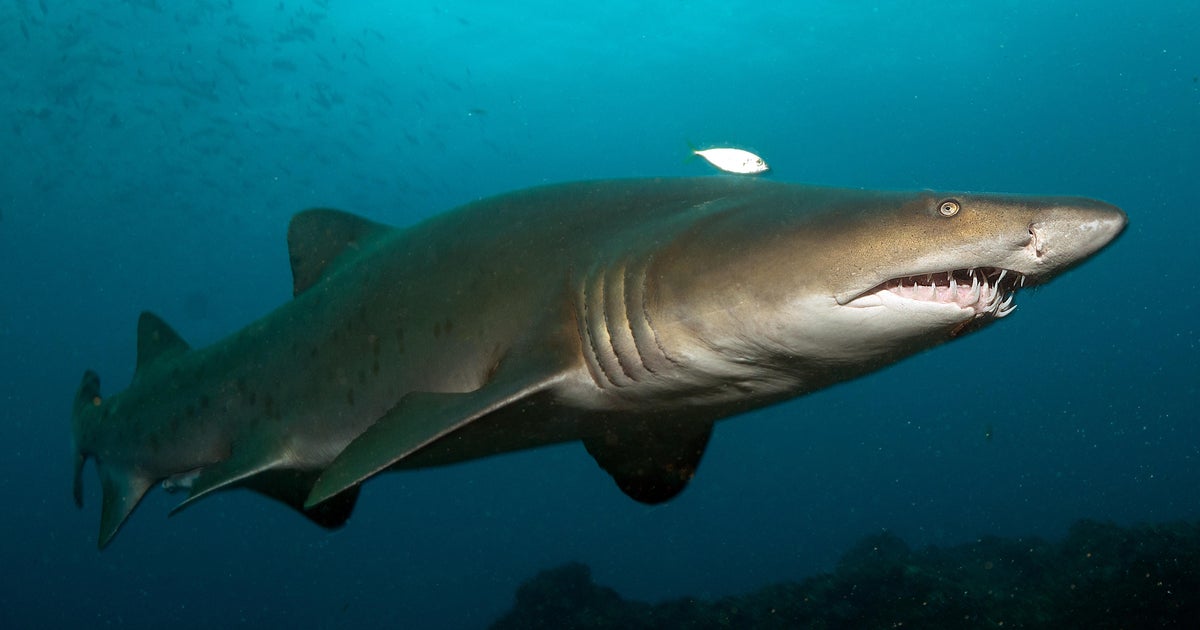
As adults, sand tiger sharks are known for being relatively non-aggressive. But as babies, these animals engage in a cannibalistic war with dozens of siblings in which only one survives.
It’s all part of a natural occurrence known as intrauterine cannibalism. Sand tiger sharks are perhaps one of the most well-known species in which this occurs. These sharks are ovoviviparous, meaning that their offspring grow in eggs in the sharks’ uteri until they hatch, at which point, they emerge into the ocean.
“It is survival of the fittest. The strongest one will emerge,” Lizeth Webster, curator of fish and invertebrates at the Long Island Aquarium in New York told CBS News. “The healthiest one will absorb all of the nutrients, not leaving enough for the others, so it will consume others in the womb.”
NOAA/Reproduction and Embryonic Development of The Sand Tiger Shark, Odontaspis Taurus (Rafinesque)
Sand tiger sharks are known for having two uteri. In each one, a female shark will have between 16 and 23 fertilized eggs. But not long after they develop their teeth, the biggest and most advanced of the embryos that’s often the first to hatch will kill and eat all the siblings it shares a uterus with, as well as any leftover yolk sacs. After being in the womb for eight to nine months, two pups – one from each uterus – will make it out into the sea.
“That’s how we get apex predators,” Webster said. “The strongest will survive.”
NOAA/Reproduction and Embryonic Development of The Sand Tiger Shark, Odontaspis Taurus (Rafinesque)
Shark scientists have known about this process for decades. In research published in NOAA’s Fishery Bulletin in 1983, they even provided visual depictions of the process.
In one case, they observed “a large hatched embryo (100 mm) that had attacked and badly damaged (puncture wounds and torn gut) a 51 mm embryo. … It is possible that the 51 mm embryo had not hatched prior to the attack.”
NOAA/Reproduction and Embryonic Development of The Sand Tiger Shark, Odontaspis Taurus (Rafinesque)
That cannibalism, however, meets a hard stop whenever the sharks are officially born. Sand tiger sharks, otherwise known as ragged-tooth sharks and grey nurse sharks, tend to eat herrings, eels, squids, crabs and lobsters, among other animals.
And no, humans aren’t on the list. The animals are known for not being aggressive toward humans, although they will become defensive if necessary. Once they grow, Webster described the animals as “calm.”
“Usually in the wild, they swim in large packs,” she said. “…When they’re in large groups like that they tend to be a lot calmer because they do have to swim in unison with other sharks. They just look like they’re floating and they’re calm.”
And while eating their siblings does help ensure that strong pups are born, it also makes it difficult for the species to survive.
The sharks, which can grow to be up to 10 feet and 500 pounds, according to the Long Island Aquarium, have one of the lowest reproductive rates among all shark species. According to the Aquarium of the Pacific, they only give birth every two years. And that poses a major problem considering the species has reached critically endangered status.
According to the IUCN Red List, populations have been decreasing worldwide, with the Mediterranean population being “locally possibly extinct,” as there have been no records of the shark in the area since 2008. Overall, researchers with the group believe the species has seen a more than 80% decline over the past 74 years “due to levels of exploitation.” Urban and industrial development, overfishing, climate change and severe weather impacting their habitats remain the biggest threats to the species.





